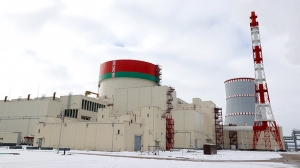Belarusian nuclear power plant's designed resistance to earthquakes mentioned

MINSK, 27 February (BelTA) – Arkady Aronov, chief researcher of the Center for Geophysical Monitoring of the National Academy of Sciences of Belarus, Doctor of Physical and Mathematical Sciences, talked to BelTA and mentioned how big of an earthquake the Belarusian nuclear power plant is designed to survive.
According to the source, the Center for Geophysical Monitoring of the National Academy of Sciences of Belarus studied the possible seismic danger in order to find out the magnitude of an earthquake the nuclear power plant will have to handle. The center also evaluated what seismic events may occur over a given period of time. Seismic risk zoning maps are used in Belarus in order to determine the degree of seismic danger for placing particularly important installations. The maps indicate what maximum seismic events may occur with the incidence rate of 1 per 10,000 years.
Arkady Aronov added that the strongest earthquake that may occur in the area where the Belarusian nuclear power plant is located is estimated at 7 on a 12-point scale. This figure was taken into account during the construction of the Belarusian nuclear power plant.
Apart from that, the correlation between the earthquake magnitude and soil movement acceleration is known. This is why the soil movement acceleration figure is used for designing seismic-resistant installations. He noted that designing a facility able to withstand an earthquake even one point more than necessary entails great financial losses, this is why scientists and construction companies do not always agree. For instance, a lot of houses in Türkiye were destroyed because their design did not accommodate earthquake precautions. “If the zoning map says that a 9-point earthquake may occur and the building gets destroyed, one can conclude that it was built without taking into account these recommendations,” Arkady Aronov said.













